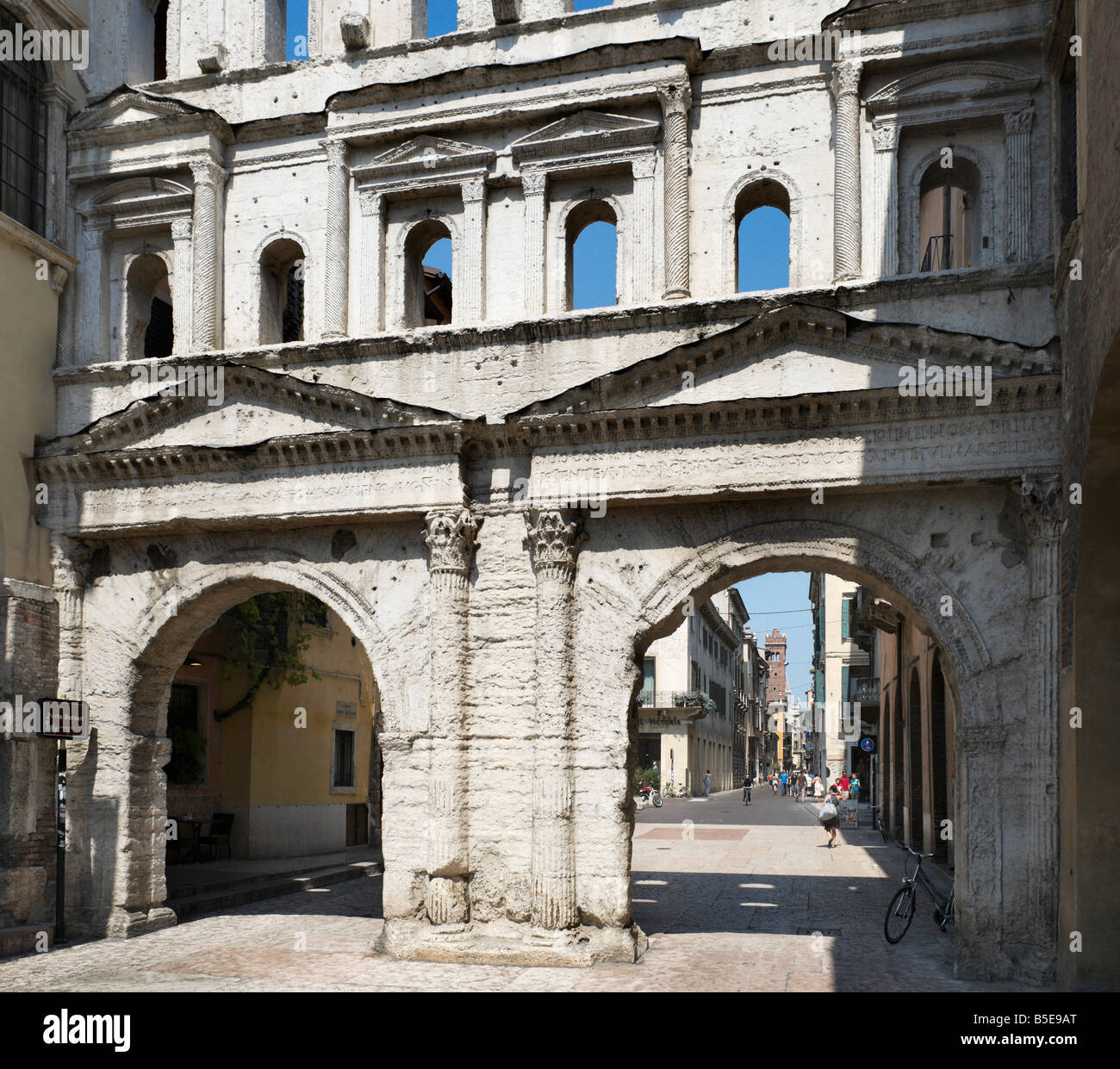
The old Roman gate of Porta dei Borsari, Verona, Italy Stock Photo Alamy
Porta Borsari. The Corso Cavour got its present name in 1867. When the gate was built the ancient Roman consular road Via Postumia, which connected the Adriatic and Tyrrhenian coasts, entered the city through its archways.Once through the gate, it became the decumanus maximus, in Roman cities the main artery from east to west.. The gate was named Porta Iovia because there was a temple.

Porta Borsari by Perry Cecchini / 500px Travel pictures, Verona italy
Historical Notes Built towards mid 1st century A.D., Porta Borsari was initially called "Porta Lovia", because of the nearby temple of Lustral Jupiter. In medieval times it was called "Porta San Zeno" and then Porta Borsari, probably because the so-called "Bursarii", that is to say the tax collectors with bags, levied entry and exit tariffs on goods at this gate.

Borsari Gate Porta Dei Borsari Verona Italy HighRes Stock Photo
Interessante testimonianza della Verona romana, la Porta dei Borsari venne eretta dai Romani con il nome di Porta Iovia, o di Giove, poiché nei pressi sorgeva un tempio dedicato a Giove Lustrale, posto fuori le mura della città, lungo un'importante via consolare, la via Postumia. Attraverso questo fondamentale asse viario di collegamento.

Porta Dei Borsari in Verona Editorial Stock Image Image of verona
Oct 2021. Mighty old city gate, built the first century after Christ. It is nicely inserted in the cityscape and separates the Corso Porta Borsari and Corso Cavour, once the main entrance to the city. The facade is made of white limestone and has two arches. The upper part is a two-floor wall with twelve arched windows.
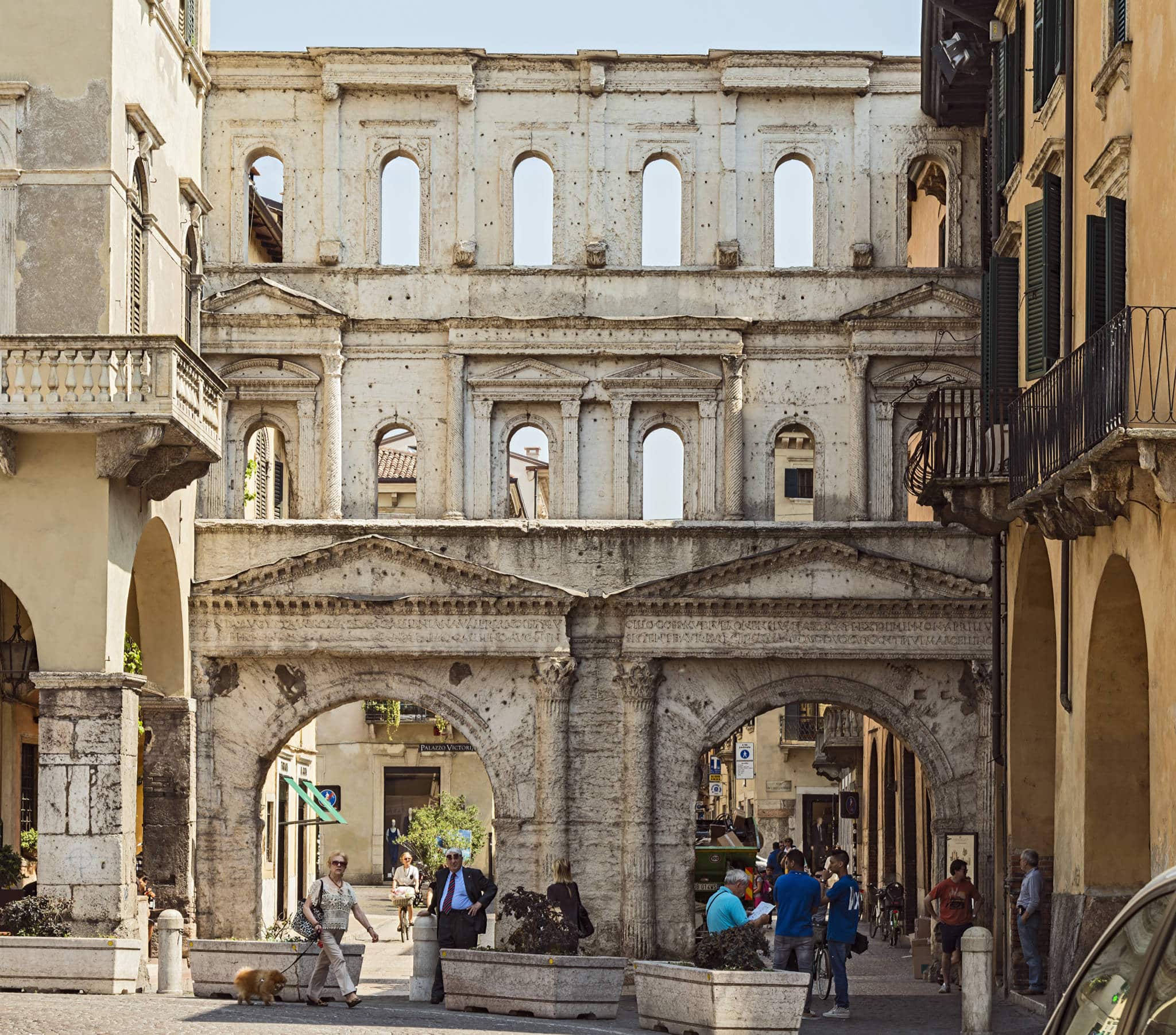
Porta dei Borsari Piazze e porte di Verona Città di Verona
Porta Borsari è una maestosa porta romana risalente al primo secolo dopo Cristo, che durante l'epoca imperiale era il principale ingresso all'urbe. Da essa entrava a Verona la via Postumia, strada realizzata dal console Spurio Postumio che all'epoca collegava il mar Tirreno con il mare Adriatico. In epoca romana le grandi Porte di ingresso.
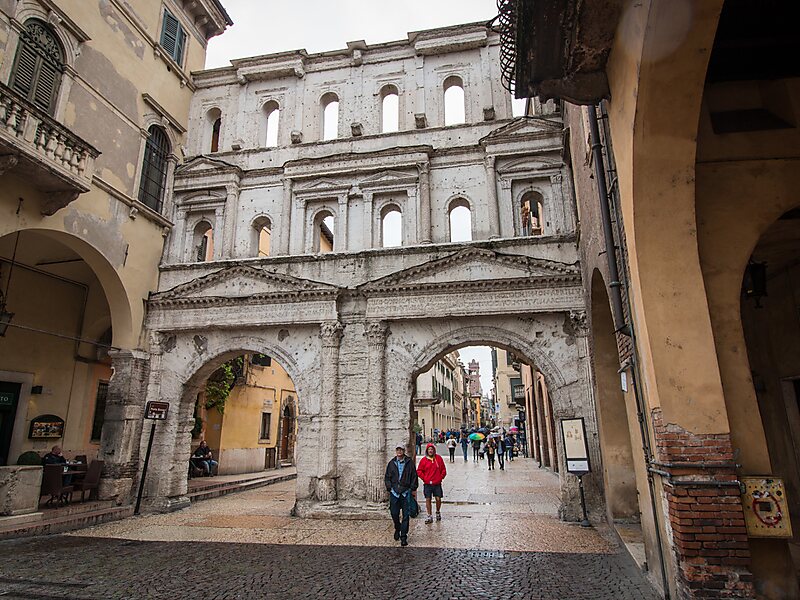
Borsari Gate in Verona, Italy Sygic Travel
Book your tickets online for Porta Borsari - World Heritage Site, Verona: See 444 reviews, articles, and 268 photos of Porta Borsari - World Heritage Site, ranked No.16 on Tripadvisor among 297 attractions in Verona.. porta dei borsari is one of the two cjty gates remain from the romans.It is situated on the road from the castle to piazza.

La antigua puerta romana de Porta dei Borsari, Verona, Italia. Que data
Read reviews and view photos. Book the perfect Porta dei Borsari tour! Full Refund Available up to 24 Hours Before Your Tour Date. Quick & Easy Purchase Process
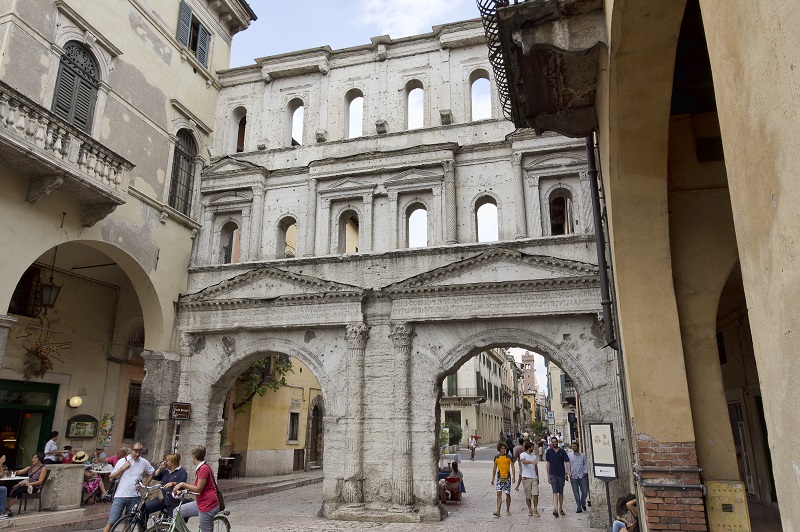
Porta Borsari, il più importante ingresso romano della città itVerona
Porta Borsari, in antichità conosciuta col nome di porta Iovia per la presenza del vicino tempio dedicato a Giove Lustrale, [1] è una delle porte che si aprivano lungo le mura romane di Verona. La costruzione della struttura risale alla seconda metà del I secolo a.C.; tuttavia la parte rimasta integra risale alla prima metà del I secolo.
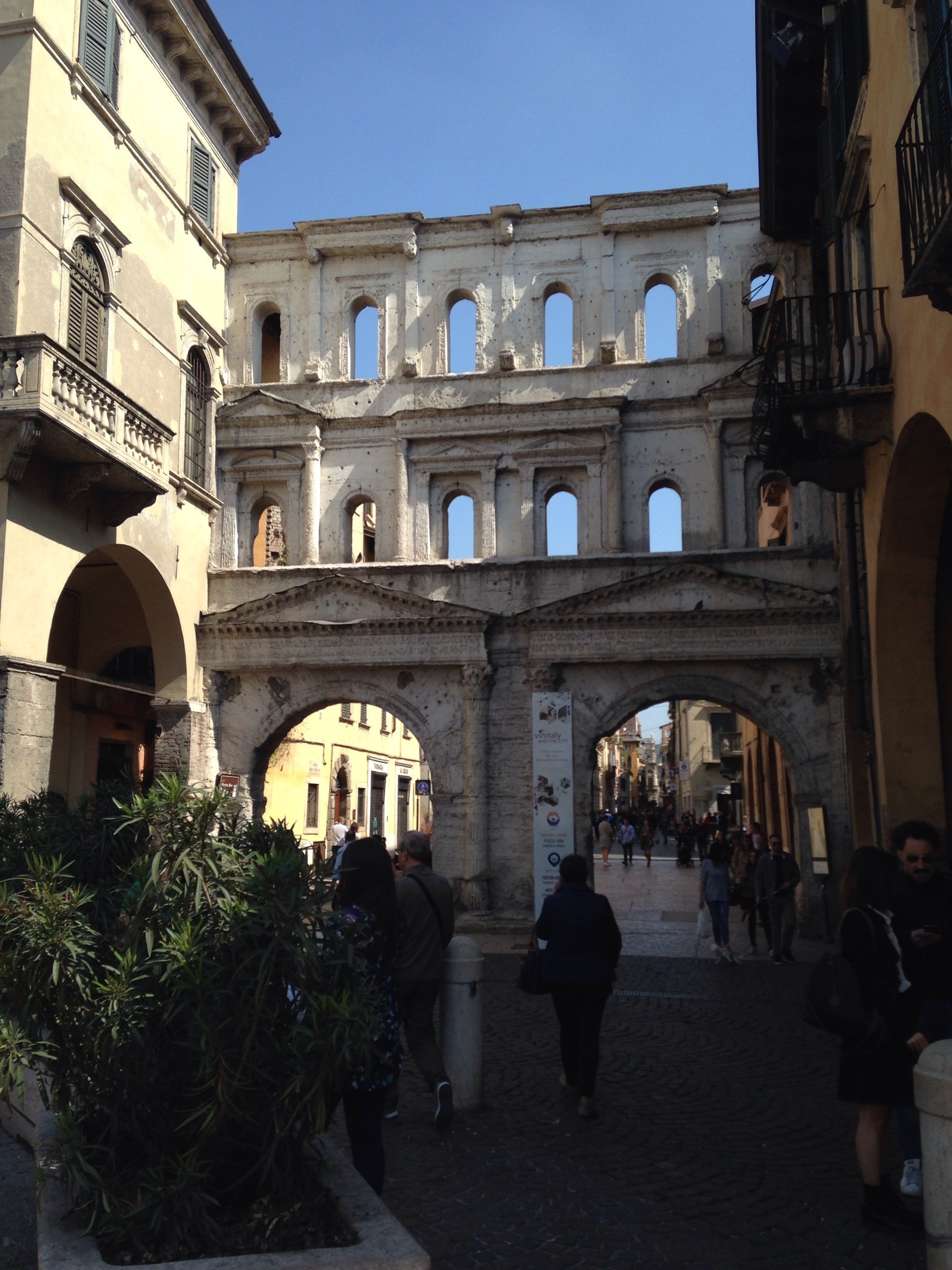
Porta Borsari in Verona City Centre Tours and Activities Expedia
Porta dei Borsari. In Roman eras, if you used the Via Postumia road, you had to enter the Verona city through Porta Dei Borsari. It was the main entrance to the city. Porta Dei Borsari is an ancient Roman gate built in the first century AD during the imperial age. It is believed that the old gate was constructed over a pre-existing gate from.

Porta dei Borsari (ancient main gates to Verona) Verona, Italy. 1st
Imponente porta facente parte delle mura romane di Verona, Porta Borsari era, in epoca imperiale, il principale ingresso della città, che immetteva in Verona la via Postumia, la strada realizzata dal console Spurio Postumio, che a quel tempo collegava Mar Tirreno e Mare Adriatico. La costruzione della porta risale al I secolo d.C. e, all'epoca, era chiamata Porta Iovia, in quanto nelle.

Porta Borsari Verona Verona italy, Italy travel, Verona
25 aprile -h15:00Verona Romana. Tour di Verona romana con mappa e adesivi. Porta Borsari era la porta di "rappresentanza" della città romana, posta sull'accesso principale alla città, quello sulla Postumia, importante via di comunicazione, "autostrada" del passato che collegava Aquileia con Genova. Il nome "Borsari" le fu dato nel medioevo.

The old Roman gate of Porta dei Borsari, Verona, Italy Stock Photo Alamy
The Iovia Gate of Verona. Porta Borsari is a majestic Roman gate serving, during the imperial era, as main entrance to the city of Verona in the Veneto region from Postumia, an important road connecting it to Genoa.. It was built towards the end of the 1st century BC and was once called Porta Iovia, for its proximity to the Temple dedicated to Jupiter Lustral.

Porta Borsari, Verona (245 A.D.) Salvador Gimeno Flickr
trivago™ Compare Many Websites. Save on Your Stay on Hotels with trivago™! Great Offers from Different Websites - All in One!

Porta Dei Borsari in Verona Editorial Photo Image of white, italian
The first version of the Porta San Giorgio was built between 1321 and 1324, by Cangrande I Della Scala. When Verona became part of the Venetian State it was rebuilt by Giovanni Maria Falconetto (1525-1526). It was not until 1840, during the Austrian rule, that it was completed. City gates Verona: A list of the remaining Roman and medieval gates.
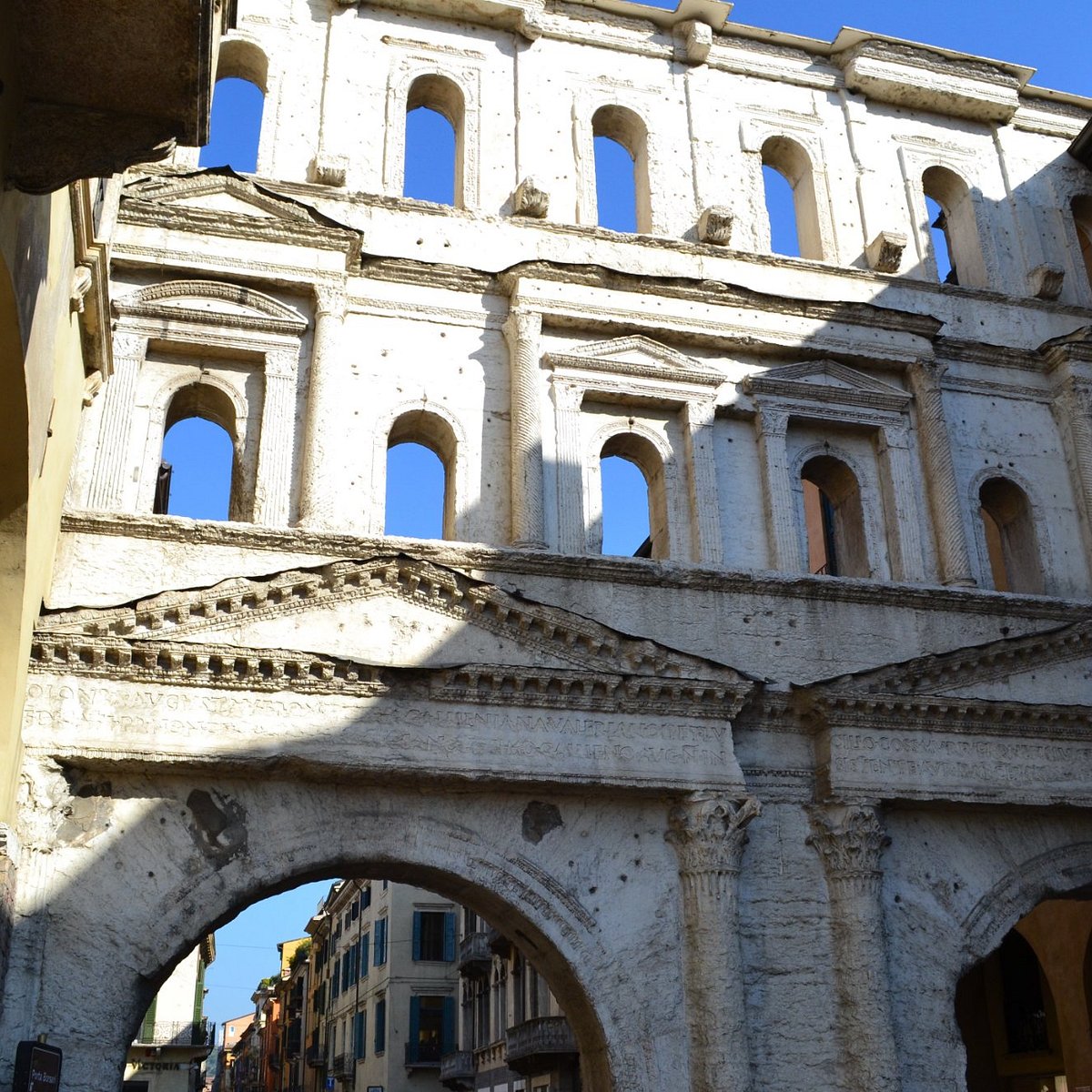
Porta dei Borsari (Verona) Tripadvisor
Porta Borsari, auch Porta dei Borsari, ist ein im 1. Jahrhundert v. Chr. errichtetes römisches Stadttor in der oberitalienischen Stadt Verona in Venetien. Alfredo Buonopane: Un dux ducum e un vir egregius nell'iscrizione di Porta Borsari a Verona (CIL, V, 3329).

Porta Borsari in Verona Stock image Colourbox
Porta Borsari is an ancient Roman gate in Verona, northern Italy . It dates to the 1st century AD, though it was most likely built over a pre-existing gate from the 1st century BC. An inscription dating from emperor Gallienus ' reign reports another reconstruction in 265 AD. The Via Postumia (which here became the decumanus maximus) passed.